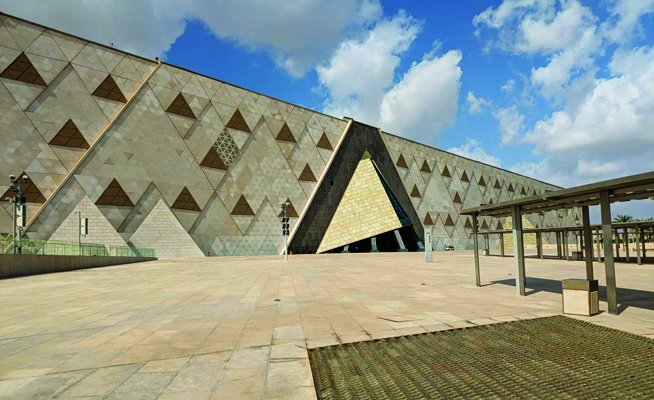After more than two decades of planning and construction, the Grand Egyptian Museum has officially opened on the Giza Plateau, close to Cairo and offering breathtaking views of the Great Pyramids, marks a new era in the preservation and display of Egypt’s ancient treasures. Recognised as the largest archaeological museum in the world, it will house approximately 100,000 artifacts, including the complete Tutankhamun collection displayed together for the first time.
AGC Glass Europe is proud to have played a significant role in this monumental project, supplying most of the glass used throughout the museum. In total, more than 30,000 square metres of AGC glass were installed across the building’s exterior facades and interior display cases, helping bring transparency, light and timeless beauty to this landmark of global cultural heritage.

Clarity for ancient treasures
For the King Tutankhamun exhibition showcases, AGC supplied approximately 2,500 square metres of Planibel Clearvision, a low-iron glass that ensures exceptional light transmission and colour fidelity. The superior transparency of the Clearvision, processed into laminated glass panes, allows visitors to view artifacts in their true colours, offering an authentic visual experience while ensuring the highest levels of protection and durability.
Energy efficiency and solar control for the façade
The museum’s distinctive double-glazed exterior façade incorporates AGC’s Stopray, Energy and Sunergy coated glass solutions. These advanced coatings provide excellent solar control and thermal insulation, optimising indoor comfort while reducing energy consumption. The expansive floor-to-ceiling windows not only illuminate the museum’s interior with natural light but also frame spectacular views of the Giza pyramids, connecting visitors with Egypt’s timeless landscape.
A modern tribute to ancient civilisation
Designed by heneghan peng architects, the Grand Egyptian Museum blends glass, stone and natural light in a contemporary design that pays homage to Egypt’s ancient legacy. The result is a cultural destination that bridges past and present, offering an immersive journey through over 5,000 years of history.






